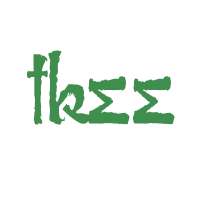
Yet, lawyers are smart, especially trademark types. Nevertheless, this legal deficit doesn’t excuse failing to pick a side. doesn’t have access to those kinds of reliable statistical resources. who is able to tell you with complete confidence there is a 2% chance of x, y, or z happening, when they perform a particular surgical procedure, your favorite J.D. Moreover, unlike going to your favorite M.D. Trademark decisions are highly subjective, fact intensive, and they often involve balancing and weighing multiple factors and keeping track of all the unknowns. In many instances, these are not the easiest of legal risk assessments. Taking a legal position and providing valuable advice - in the trademark world - is definitely an art, not a science. He or she is much more comfortable telling you both sides of the story and ends up providing this kind of invaluable advice: "It could go either way," "you could really flip a coin on this one," "it’s six of one and a half a dozen of the other," or "it’s no better than a 50/50 shot." Let’s just say, that is pretty safe advice, assuming the clients don’t demand more. Perhaps fearful of choosing the wrong side makes sitting on the fence the preferred course of action for J.D. In short, J.D. Waffler’s problem is, well, a proclivity for waffling. He or she doesn’t practice the art of taking a position, at least on a regular basis. Who wins? Well, you might be surprised to know, that’s not as important in law school, so long as you can make the arguments on both sides of the issue. But, who wins is important in the business world, so good trademark lawyers must learn to adapt and evolve, in order to become useful members of any multidisciplinary team.

Another important learned skill is to be able to identify the strongest legal arguments on each side of an issue.
#Ey interstate regular font how to#
learned in law school is how to spot all the possible legal issues in any given fact scenario - no matter how remote the risk of each might be. because he or she has earned the coveted Juris Doctor degree. There is clearly room for improvement in our profession in other areas too. No" moniker and mindset should not be the only goal of trademark types. No is what motivated one cartoonist to brand (uh, jab) the “ trademark attorney” as “ the most basic figure ," at least in the world of Art.Īvoiding the "Dr.

Perhaps repeated frustration with this kind of Dr. He is typically part of the problem, not the solution.

He is obsessed with saluting to the Parade of Horribles. The underlying personal brand promise for this lawyer is to say “no,” early and often, believing an enormous hourly rate is still justified by citing a multitude of technical and valid legal reasons in support of the unhelpful answer. No," and we discussed how he or she likes to focus on the "Parade of Horribles" instead of creative solutions to difficult and important problems: In the inaugural post for DuetsBlog, last March, we introduced a type of trademark attorney known as "Dr. And, if bell curves have any application here, a few are much worse too. Like any profession, some of the professionals are better and more gifted than others. A few are much better. Would it surprise you to learn that not all trademark types are created equal? I didn’t think so.


 0 kommentar(er)
0 kommentar(er)
